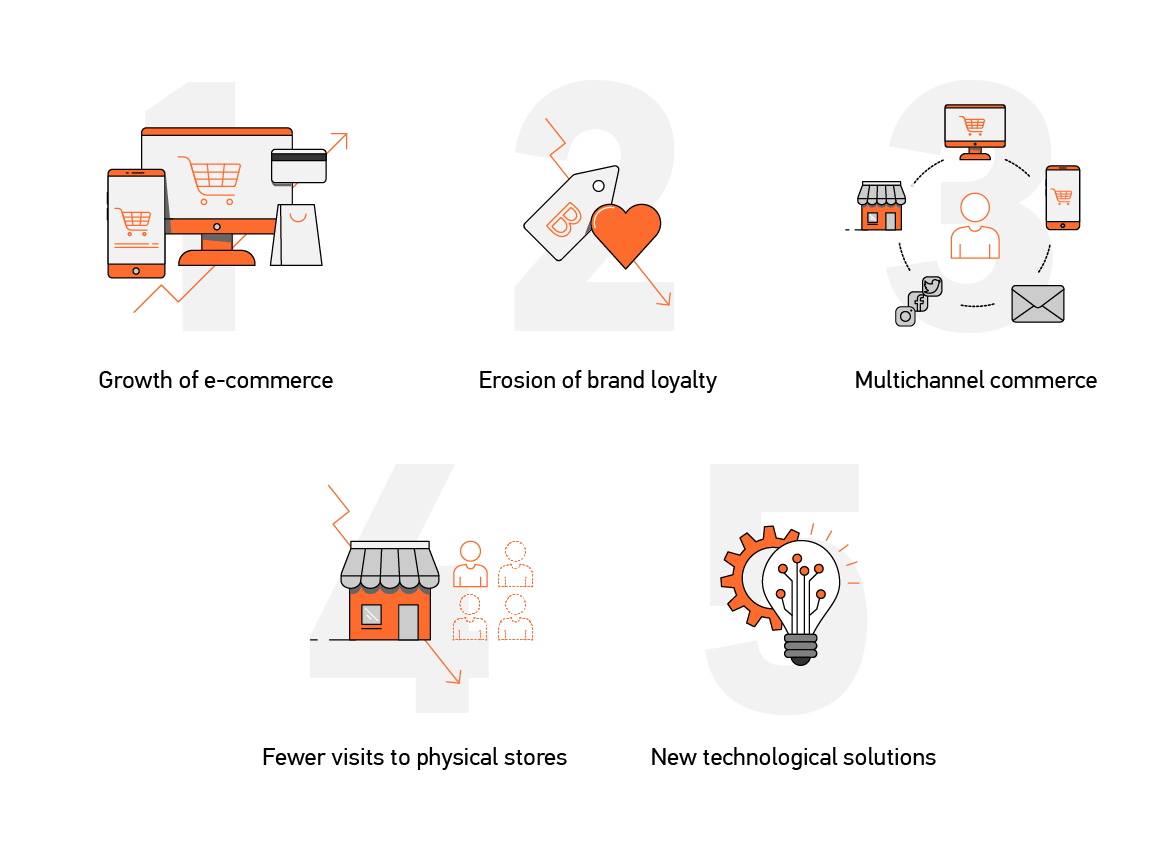
To survive the pandemic, businesses packed up their goods and services and moved online in seven-mile steps. There, amid fast-growing competition, they are doing all they can to get customers’ attention. Tadas Četkauskas, Head of Business Development at NFQ, and Jurgis Gylys, Head of Business Digitalization at the provider of strategic and technological solutions for businesses aiming to grow, talk about this year’s most prominent trends and how to stay on top of them.
Trend No. 1: Growth of e-commerce
During the pandemic, businesses that wanted to survive were forced to view their work creatively as all kinds of new delivery options and services appeared on the market. One example in Lithuania is the restaurant Taurakalnis
“When its business came to a halt, Taurakalnis thought up a unique food service and competed successfully with other food delivery platforms. They offered ‘meal kits’ to customers who were longing for homemade food. People choose the dish they want and get the ingredients needed to make it along with instructions to do it themself. Then they’ll have homemade food when they want it, freshly prepared, and not when a courier brings it. This example shows how, to survive and not get lost in the crowd, businesses have had to innovate and develop new services,” Jurgis Gylys says.
The bigger choice of goods and services is driving customers to shop online and, conversely, the growth of online customers is encouraging businesses to expand online sales. “Note that the growth in online sales seen on Black Friday and in the Christmas season doesn’t go away but rather raises the bar further. Compared to 2020, last year's Black Friday, Cyber Monday and Cyber Week saw a 27% increase in shipments. That signals that we will definitely see an increase in digital sales again this year,” Gylys notes.
Trend No. 2: Erosion of brand loyalty
Amid the surge in e-commerce offerings, customers have also raised their expectations. American Express reports that a full one-third of consumers change suppliers after one instance of bad service, and more than half (56%) no longer give a second chance. “There’s a clear trend of brand-loyalty erosion today. Customers are no longer loyal to sellers, they’re more focused on their own expectations and shopping experience, and competitors with more convenient platforms or services may be lurking around the corner. A great example is the success of eavalyne.lt, an e-shop from neighboring Poland. Without a single physical store in Lithuania but offering a large assortment, fast delivery and very easy returns, eavalyne.lt became extremely popular in our country, simply shifting the process of trying on and buying shoes from physical stores to the customer’s home,” Jurgis Gylys shares.
Trend No. 3: Multichannel commerce
Multichannel sales will remain one of the major trends in 2022. It’s a way of selling where the customer can acquire an item via a variety of sales channels: from an e-shop, at a physical store or on social networks. Customers often see an item online but, wanting to try it on or try it out, they go to a physical store. But they don’t necessarily buy it right away and may ultimately purchase it somewhere else. The opposite can happen too: failing to find what they want at a physical store, in terms of size, color, etc., a customer may end up buying online, and not necessarily from the same retailer.
“Generation Z shoppers are especially fond of multichannel commerce. They may notice an product on a social network, but they also enjoy the physical shopping experience. They want to see on the web platform itself whether there’s a physical store in their area and whether it has the product in the right size and color. With that information, they’ll visit the physical store, interact with the sales attendant, and leave with the pleasant feel of a shopping bag on their arm. Customers move from channel to channel on their own shopping journey. A business’s job is to make that journey as smooth as possible. It doesn’t manner where it starts or ends, what’s important is that throughout the journey all the channels are aligned so the customer feels at ease shopping in a single space,” says Gylys, who is an expert in multichannel commerce.
Trend No. 4: Fewer visits to physical stores
As multichannel commerce gets more popular, customers naturally are making fewer visits to electronics, clothes and other physical stores. A customer that goes to a shopping center today probably won’t go back there tomorrow. Thus, the question of how not to lose customers is becoming a bigger and bigger headache for businesspeople.
“A customer comes to a store and talks to an attendant, and it all ends either with or without a sale. In e-commerce, there’s the well-known problem of customers who put items in their cart but then don’t buy them. So-called ‘abandoned carts’. Here, the retailer knows the potential customer’s contacts and cart contents and so can send them a reminder about the incomplete purchase to lure them back. At physical stores, the situation is different. A shopper who doesn’t make a purchase simply leaves. The seller does not have any information about that potential customer or the products they were interested in and so cannot encourage them to continue the purchase. So here you have to pose the question of how not to lose a customer who leaves a physical store and has no intention of returning there anytime soon,” Tadas Četkauskas says.
Trend No. 5: New technological solutions
Seeing the ever-clearer trend of less frequent visits to shopping centers, NFQ developed a Sales Attendant app. “This innovation enables data collection, tracking of sales statistics, and optimization of the sales process. During an interaction in a physical store, the sales attendant can capture data in the app like the customer’s sex, the length of the interaction, what products they were and were not interested in, and what items were not sold because the store didn’t have the right size or color,” Četkauskas notes.
What is crucial is maintaining contact with a customer who leaves a store empty-handed. “If a visitor to a physical store asks about but doesn’t buy a product, the attendant can offer to send them more detailed information by email or text message. The message then sent to the customer can include not just product specifications but also encouragement to buy and an incentive to do that ‘here and now’. In that way, a person who leaves a physical store without buying anything is still a potential customer of the same seller’s e-shop,” the business development expert explains.
Well though-out technological solutions can be like sails that help not just manage the winds of, at first glance, unfavorable trends, but also help expand business by combining physical and online sales channels. It is obvious that e-commerce volumes will only increase and multichannel commerce will get more popular as physical and online retailing integrate. The key question is how Lithuania’s businesses, big and small, will become part of and take advantage of these trends.
